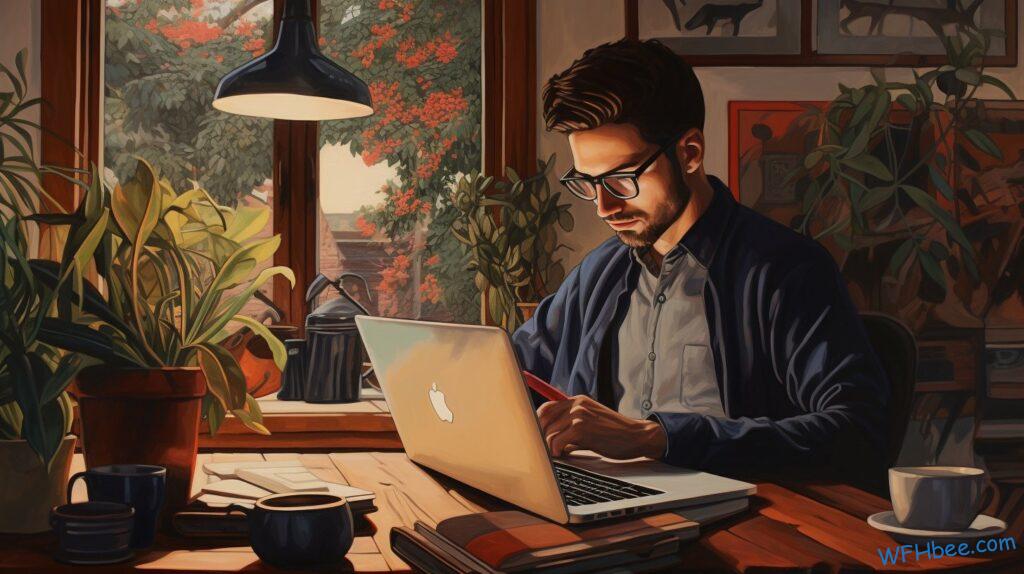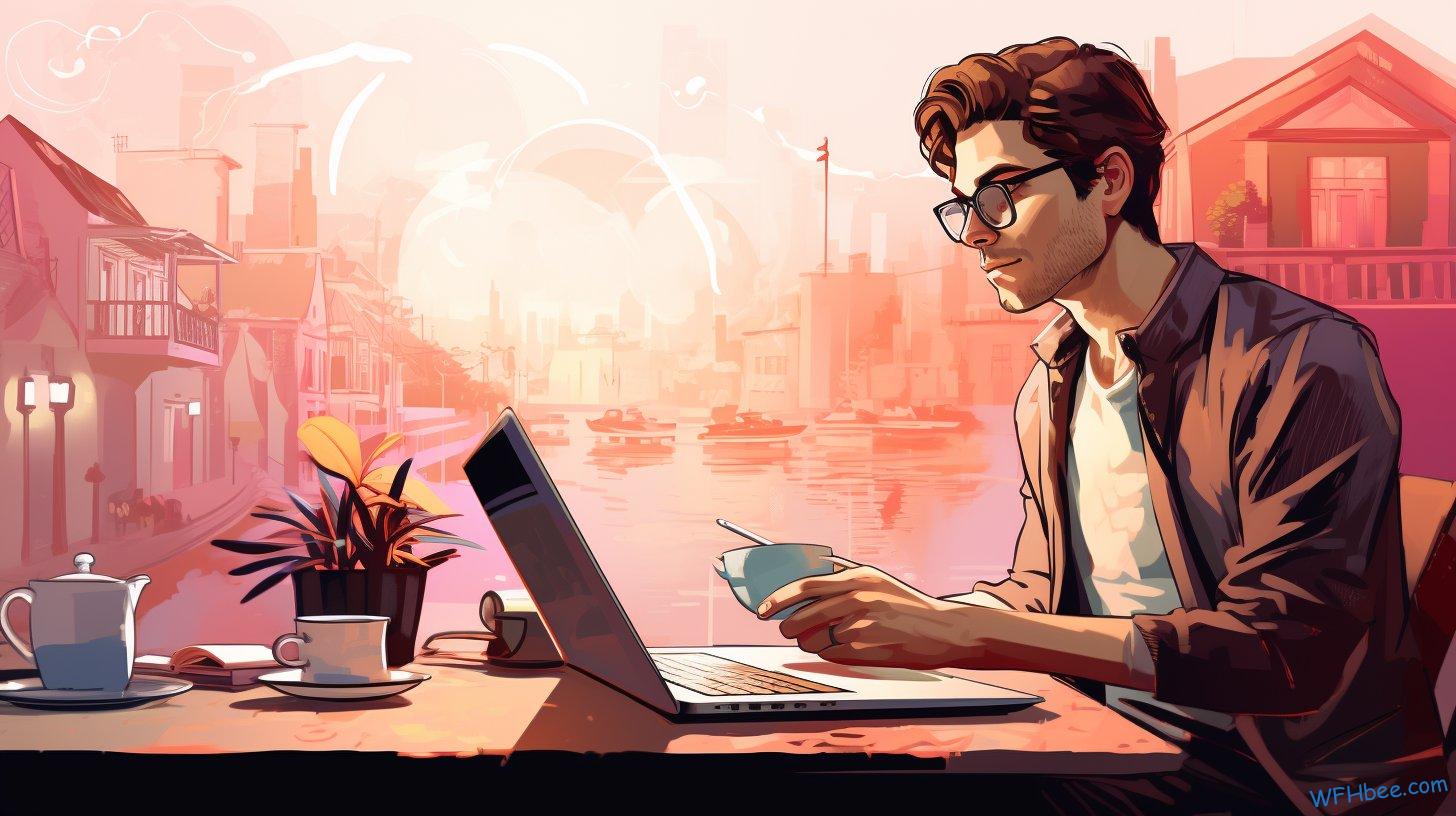Imagine the freedom of working as a graphic designer from anywhere in the world. No more commuting or being tied to a physical office. With remote work, you can unleash your creativity while enjoying the flexibility and autonomy you crave.
This article will show you how to thrive in the world of remote graphic design by providing essential tools, tips for finding opportunities, setting up a productive workspace, and mastering collaboration and time management.
Get ready to embrace the limitless possibilities of remote work for graphic designers.
Key Takeaways
- Remote work offers graphic designers a more flexible schedule and better work-life balance.
- Remote work eliminates the need for long commutes, saving time and money.
- Remote work allows graphic designers to have greater autonomy and control over their workload.
- Remote work can increase productivity and creativity due to lack of office policies and distractions.

Table of Contents

Benefits of Remote Work for Graphic Designers
One of the benefits of remote work for graphic designers is that you can have a more flexible schedule. Working remotely allows you to break free from the traditional 9-to-5 routine and gives you the freedom to choose when and where you work. This flexibility allows you to better balance your professional and personal life, giving you more time to pursue your passions or spend quality time with loved ones.
Remote work offers several advantages for graphic designers. Firstly, it eliminates the need for long commutes, saving you time and money. Instead of sitting in traffic or cramming into crowded public transportation, you can simply roll out of bed and start working from the comfort of your own home or anywhere else that suits your fancy.
Additionally, remote work provides greater autonomy and control over how you manage your workload. You have the freedom to set your own pace and prioritize tasks according to what works best for you. This level of independence allows for increased productivity as well as creativity since you are not bound by rigid office policies or distractions.
Of course, there are challenges associated with remote work that graphic designers must be prepared to face. One such challenge is maintaining effective communication with clients and team members who may be located in different time zones or countries. However, with tools like video conferencing software and project management platforms, these obstacles can be overcome.
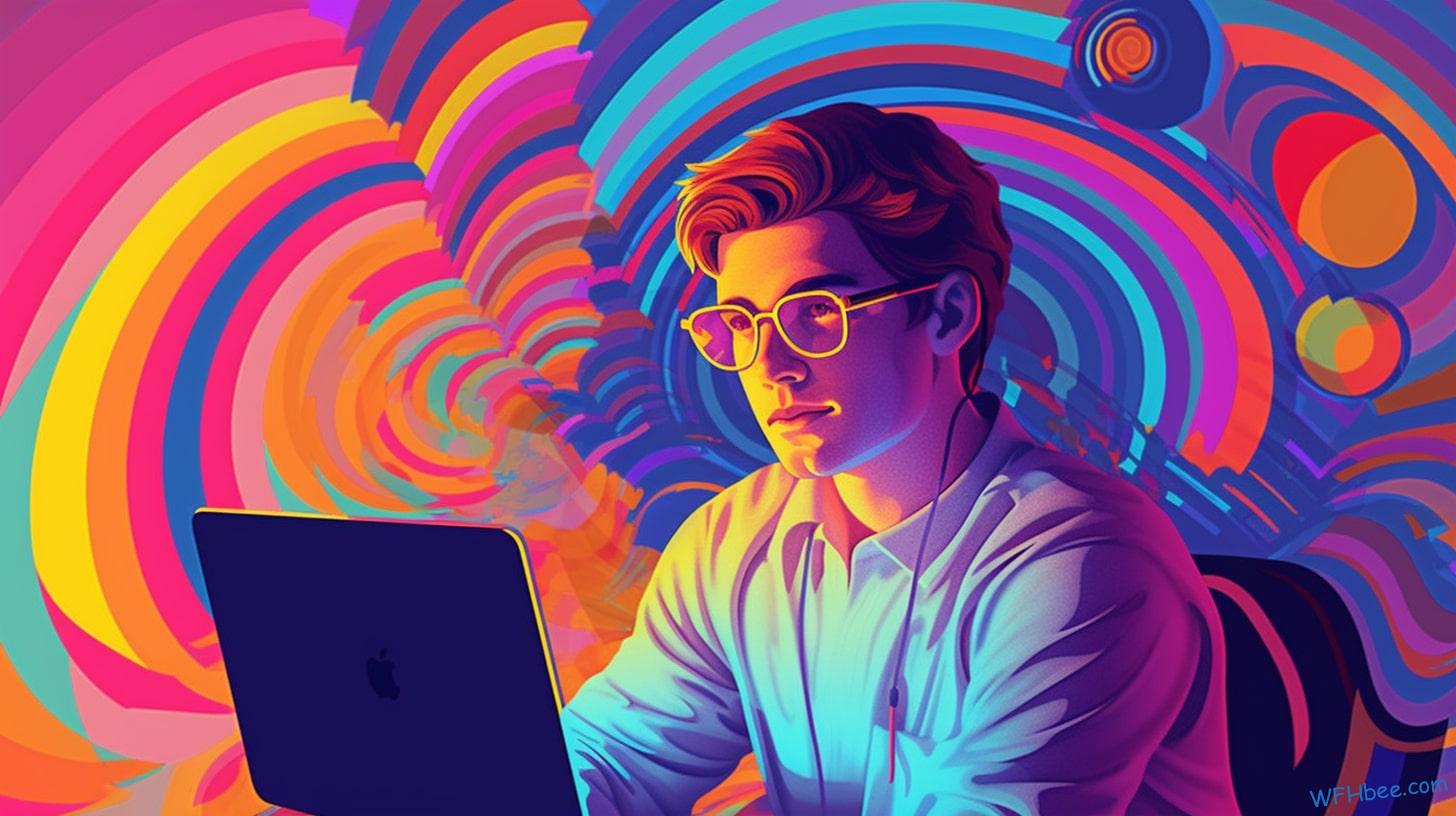
Essential Tools for Remote Graphic Design Work
To excel in your remote graphic design work, make sure you have all the essential tools at hand. Working remotely gives you the freedom to create stunning designs from anywhere in the world, but having the right tools is crucial for efficiency and productivity.
Here are three must-have remote graphic design tools that will empower you to unleash your creativity:
- Adobe Creative Cloud: This suite of design software has become an industry standard for graphic designers. With applications like Photoshop, Illustrator, and InDesign, you’ll have everything you need to bring your ideas to life. The cloud-based nature of this software allows for seamless collaboration with clients and team members.
- High-quality Monitor: A high-resolution monitor is essential for accurate color representation and precise detailing in your designs. Investing in a quality monitor ensures that you can optimize your workspace and visualize your creations with clarity.
- Cloud Storage Service: Storing and accessing your files securely is crucial when working remotely. Utilizing a reliable cloud storage service like Dropbox or Google Drive allows you to easily share large files with clients or colleagues while keeping them safely backed up.
By equipping yourself with these remote graphic design tools, you’ll be able to work efficiently without any limitations on location or time zone. Whether it’s creating logos, designing websites, or developing illustrations, these tools will provide the freedom and flexibility needed to thrive as a remote graphic designer.
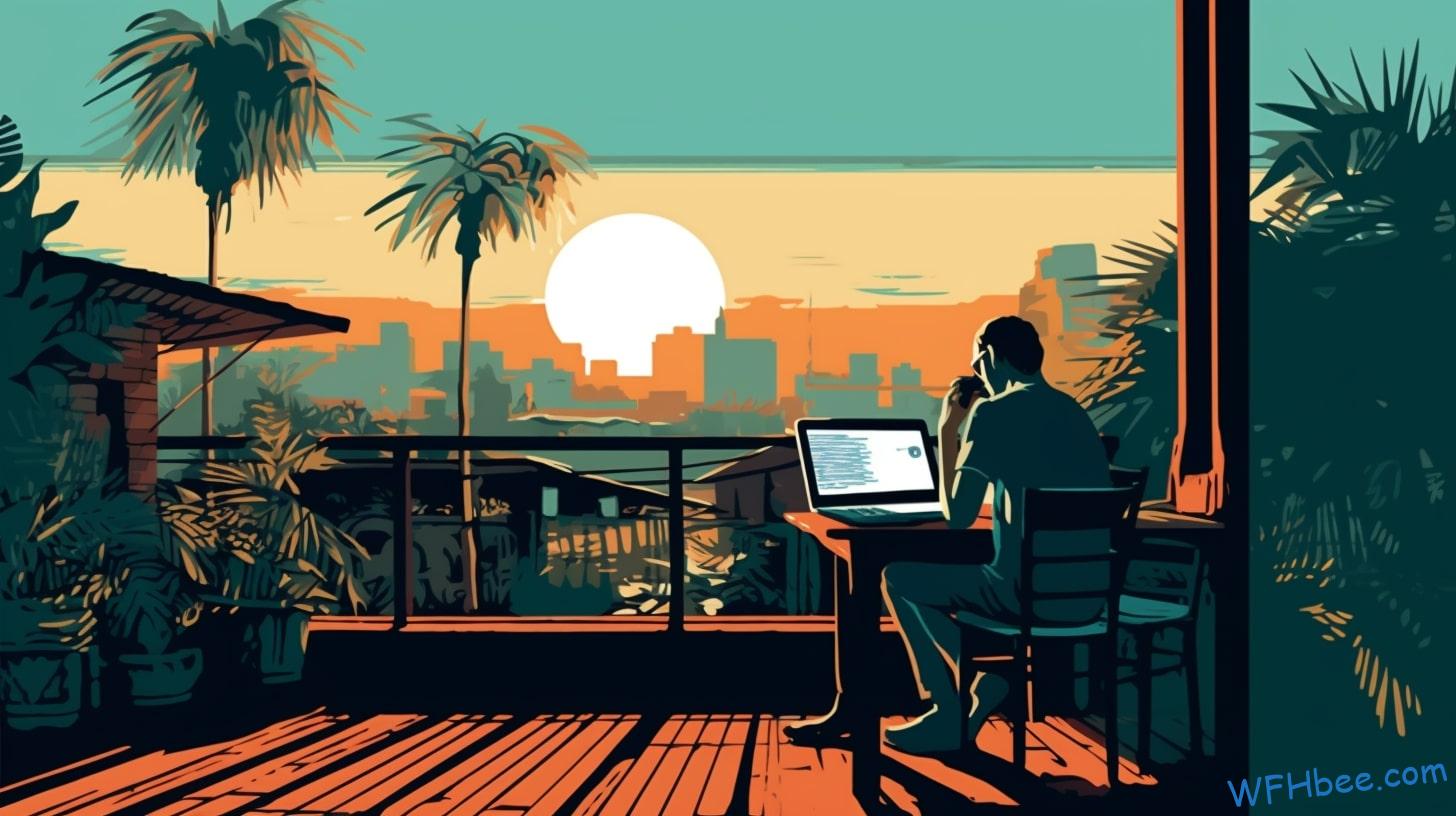
Finding Remote Graphic Design Opportunities
If you’re looking for opportunities in the field of graphic design, it’s important to explore remote options that allow you to work from anywhere. The freedom to choose your location and have a flexible schedule is a dream for many graphic designers. Luckily, with the rise of remote work, there are now plenty of opportunities available in this field.
When embarking on your remote graphic design job search, it’s essential to utilize various platforms specifically designed for remote work. These platforms connect freelancers with clients who are seeking graphic design services remotely. Websites such as Upwork, Freelancer, and Fiverr provide a wide range of projects where you can showcase your skills and expertise.
One advantage of using these remote graphic design platforms is the ability to build a diverse portfolio by working with clients from different industries and backgrounds. This not only allows you to expand your skill set but also gives you the opportunity to demonstrate your adaptability as a designer.
In addition to freelance platforms, another option is applying directly through websites that specifically list remote graphic design jobs. Websites like Remote.co and We Work Remotely have dedicated sections for graphic designers where companies post open positions exclusively for remote workers.
Remember, when searching for remote opportunities in the field of graphic design, it’s crucial to stay active on social media platforms like LinkedIn and Twitter. Many companies share job openings on their profiles or through hashtags related to remote work or graphic design.

How to Set Up a Productive Remote Design Workspace
When setting up your remote design workspace, prioritize creating a comfortable and organized environment that allows you to focus on your creative tasks. Working from home gives you the freedom to design in an environment that suits your needs and preferences.
Here are three key elements to consider when setting up your ergonomic workspace:
- Ergonomic Chair: Invest in a high-quality chair that provides proper support for your back and promotes good posture. Look for adjustable features like height, armrests, and lumbar support. Remember, comfort is crucial when spending long hours working on design projects.
- Dual Monitors: Enhance your productivity by using dual monitors. Having two screens allows you to have multiple windows open simultaneously, making it easier to multitask and reference different resources while designing. It also reduces eye strain as you won’t have to constantly switch between tabs.
- Organizational Systems: Keep your workspace clutter-free by implementing organizational systems. Use desk organizers, drawer dividers, or wall-mounted shelves to store pens, notebooks, and other essential tools within easy reach. A clean and tidy workspace promotes focus and reduces distractions.
Creating a work-life balance is vital for remote designers seeking freedom in their professional lives. Establishing boundaries between work time and personal time is essential to prevent burnout. Set specific working hours, take regular breaks away from the computer screen, and create a designated area solely for work-related activities.
By setting up an ergonomic workspace tailored to your needs and ensuring a healthy work-life balance, you’ll be able to unleash your creativity more freely as a remote graphic designer while enjoying the flexibility that comes with this unique career path.

Remote Collaboration Tips for Graphic Designers
Collaborating effectively with others on design projects is crucial for remote graphic designers. These tips will help you streamline the process and overcome the unique challenges of working remotely.
Firstly, clear communication is essential for successful remote collaboration. Make sure everyone involved understands the project goals, timelines, and expectations from the start. Utilize digital tools like project management software or video conferencing platforms to facilitate real-time communication and foster a sense of teamwork.
Another tip is to establish regular check-ins with your team members. This allows you to stay updated on progress, address any issues promptly, and provide feedback in real-time. By staying connected regularly, you can ensure that everyone is on the same page throughout the design process.
In addition to communication, effective file sharing is crucial for remote collaboration. Use cloud-based storage solutions like Dropbox or Google Drive to share design files securely and access them from anywhere. This eliminates the need for cumbersome email attachments and ensures that everyone has access to the latest version of the files.
Lastly, embrace visual collaboration tools that allow you to work together in real-time. Platforms like Figma or Miro enable multiple designers to collaborate simultaneously on a single document, making it easy to brainstorm ideas or make revisions together.
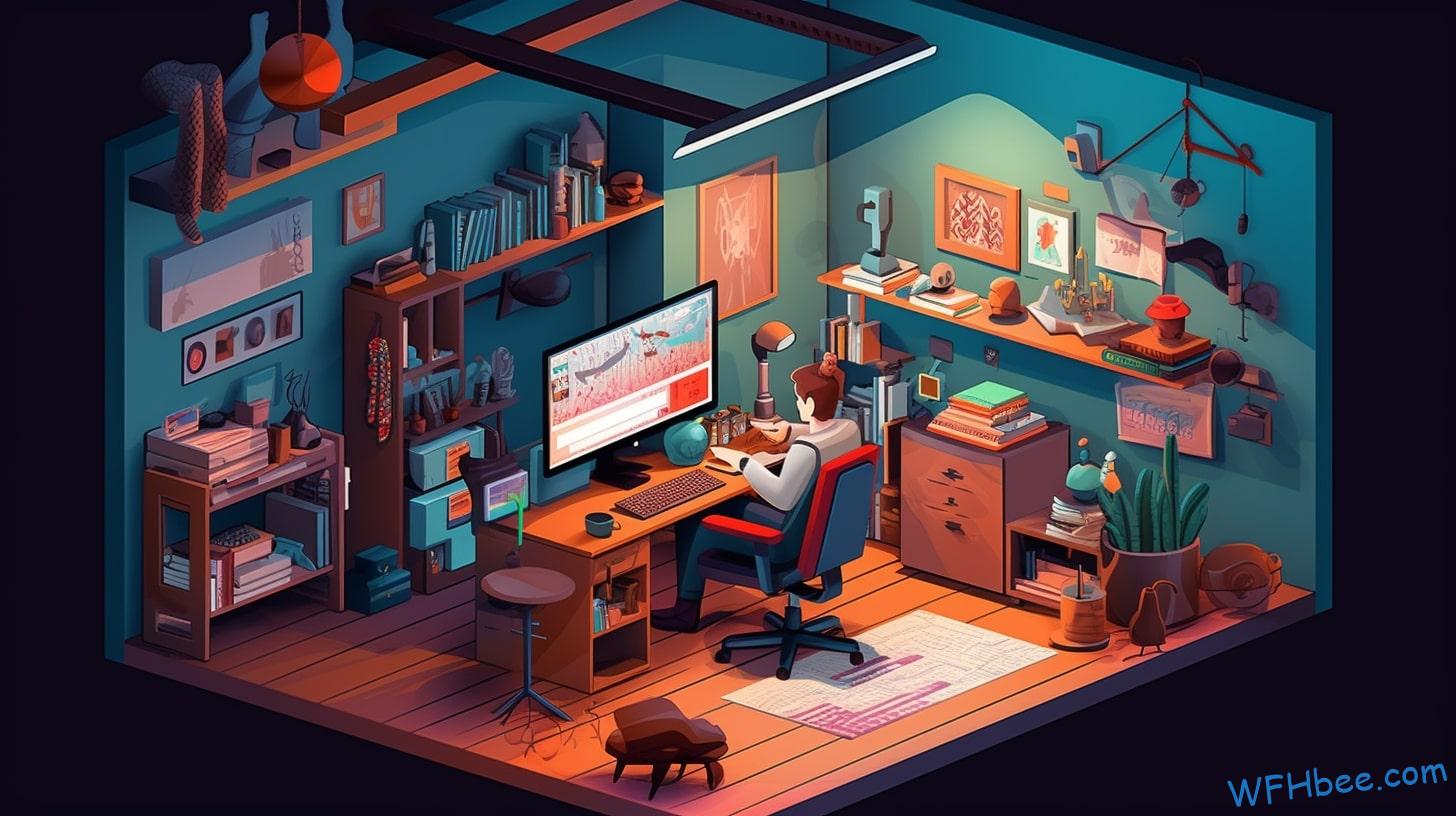
Staying Motivated and Focused as a Remote Graphic Designer
To stay motivated and focused while working remotely, it’s important to establish a daily routine that includes breaks and clear boundaries between work and personal life. As a remote graphic designer, you have the freedom to create your own schedule and work from anywhere. However, this freedom can sometimes lead to distractions and lack of motivation.
Here are some tips to help you stay on track:
- Set small goals: Break down your projects into smaller tasks and set achievable goals for each day. This will give you a sense of progress and keep you motivated.
- Take regular breaks: It’s easy to get caught up in your work when you’re in the comfort of your own home. But taking regular breaks is essential for maintaining focus. Step away from your desk, stretch, or go for a short walk outside. These breaks will refresh your mind and prevent burnout.
- Create a dedicated workspace: Designate an area in your home specifically for work. This will help create a physical boundary between your personal life and work life. When you enter this space, it signals that it’s time to focus on work.
Working with remote graphic design clients can also present unique challenges when it comes to staying motivated:
- Communicate regularly: Establish clear lines of communication with your clients through email or video calls. Regular check-ins can help ensure that both parties are on the same page, which can boost motivation by providing clarity.
- Seek feedback: Feedback from clients is valuable in improving your designs and staying motivated. Request feedback regularly so that you know how well you’re meeting their expectations.

Overcoming Challenges of Remote Graphic Design Work
You may face various challenges while working as a graphic designer from a distance, but finding effective ways to overcome them is essential for your success.
One of the biggest hurdles you might encounter is overcoming communication challenges. Without face-to-face interactions, it can be challenging to convey your ideas clearly and collaborate effectively with clients or team members. However, there are strategies you can employ to bridge this gap and ensure seamless communication.
Utilizing video conferencing tools like Zoom or Skype can help you have real-time discussions and presentations. Additionally, using project management software such as Trello or Asana can facilitate clear task assignments and updates.
Another challenge you may encounter while working remotely as a graphic designer is maintaining work-life balance. When your home becomes your office, it’s easy for boundaries between work and personal life to blur. To address this issue, establish a designated workspace in your home where you can focus solely on work during designated hours. Set clear boundaries with yourself and others regarding when you will be available for work-related matters.
It’s also important to schedule regular breaks throughout the day to recharge and avoid burnout. Engaging in activities that bring you joy outside of work will help maintain a healthy balance between professional responsibilities and personal well-being.

Balancing Work-Life as a Remote Graphic Designer
Now that we’ve discussed how to overcome challenges in remote graphic design work, let’s focus on something equally important: finding the right balance between work and life.
As a remote graphic designer, it can be tempting to blur the lines between your professional and personal life. However, maintaining a healthy work-life balance is crucial for your overall well-being and productivity.
Here are three key points to consider when striving for work-life balance as a remote graphic designer:
- Establish clear boundaries: Set specific working hours and stick to them. Communicate these boundaries with your clients or team members so they know when you’ll be available. Avoid checking emails or doing work-related tasks outside of designated hours.
- Create a dedicated workspace: Designate an area in your home solely for work purposes. Having a separate physical space will help you mentally switch into ‘work mode’ and increase focus. When you’re done working, leave this space behind and enjoy the freedom of your personal environment.
- Take regular breaks: Don’t forget to take breaks throughout the day. Step away from your desk, stretch, go for a walk, or engage in activities that recharge you. This will prevent burnout and improve productivity when you return to your tasks.
Finding the right balance between work and life is an ongoing process that requires self-discipline and prioritization. By implementing these strategies, you can enjoy the benefits of remote work while maintaining a fulfilling personal life.

Building a Remote Graphic Design Portfolio
Building a portfolio as a remote graphic designer can showcase your skills and attract potential clients. As someone who desires freedom in their work, you have the flexibility to create an impressive collection of your best designs that speaks directly to your target audience.
In building a remote graphic design portfolio, it is essential to curate a selection of projects that demonstrate your expertise and versatility. Focus on showcasing diverse styles, techniques, and mediums to highlight your range as a designer. Include both personal projects and client work to demonstrate your ability to collaborate effectively.
When creating your portfolio, consider the specific needs and preferences of remote graphic design job opportunities. Tailor your portfolio towards industries or niches that interest you most. For example, if you enjoy designing for startups or tech companies, include relevant projects that reflect this expertise.
To make your portfolio stand out even more, provide detailed case studies for each project. Explain the goals, challenges faced, and how you overcame them in order to achieve successful outcomes for clients. This will not only demonstrate problem-solving skills but also showcase your ability to deliver results.
In addition to visual samples of your work, don’t forget to include testimonials from satisfied clients or colleagues. These testimonials add credibility and give potential clients insight into what it’s like working with you remotely.
Remember that building a remote graphic design portfolio is an ongoing process. Continuously update it with new projects as you complete them and regularly evaluate its effectiveness in attracting potential clients. By investing time in crafting an outstanding portfolio tailored for remote work opportunities, you’ll increase the chances of landing exciting design gigs while enjoying the freedom of working remotely.
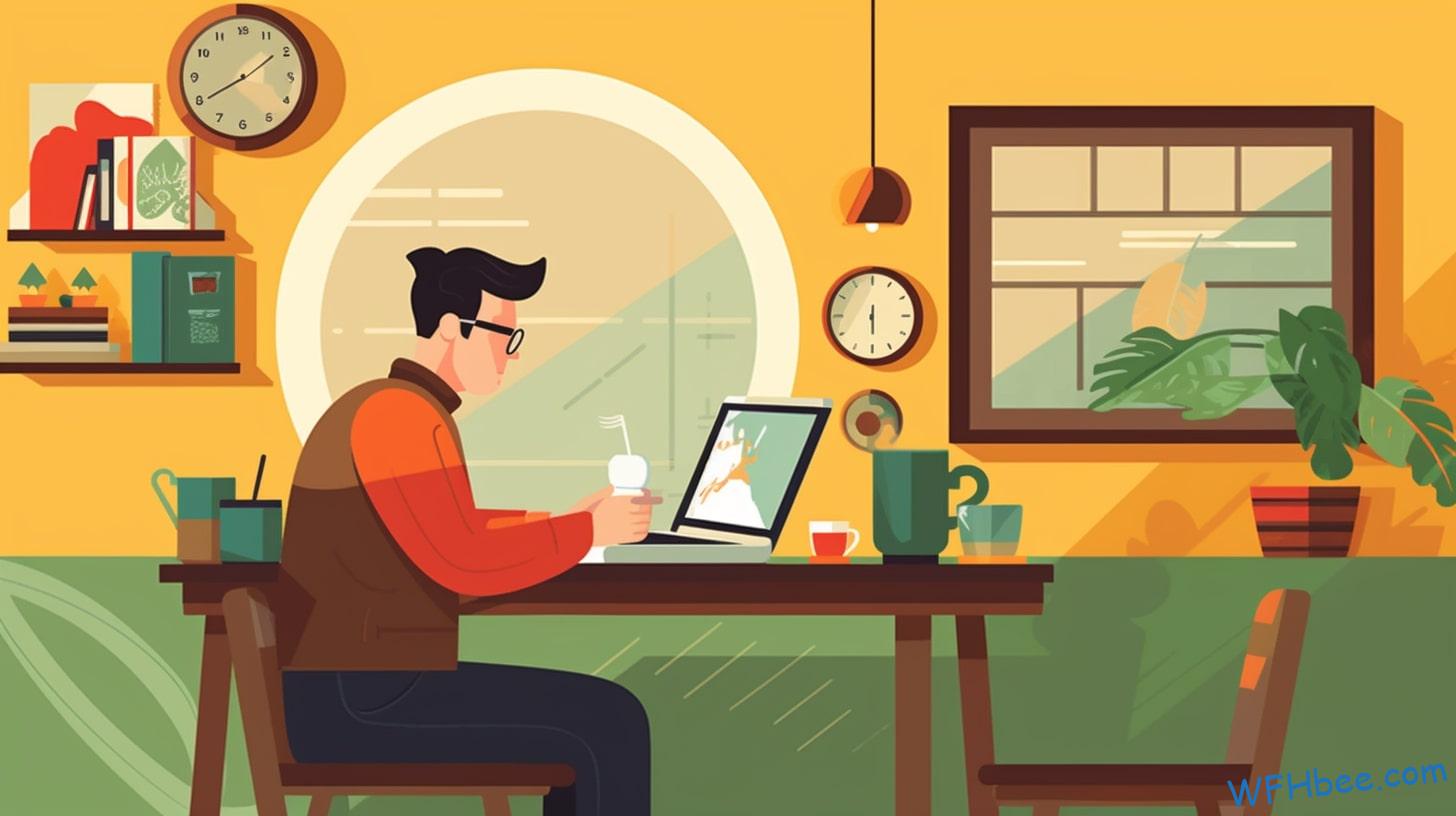
Networking and Connecting With Remote Design Communities
Connecting with remote design communities is a great way to expand your professional network and gain valuable insights from like-minded individuals. In today’s digital age, there are numerous online platforms and events that cater specifically to remote designers. By actively participating in these communities, you can stay updated on the latest industry trends, collaborate with talented professionals from around the world, and find new opportunities for growth and development.
Here are three reasons why connecting with remote design communities is essential for your professional journey:
- Access to Remote Design Events: Online design communities often organize virtual events such as webinars, workshops, and conferences where you can learn from experts in the field. Attending these events allows you to stay ahead of emerging technologies and techniques while interacting with industry leaders.
- Networking Opportunities: Joining remote design communities provides an excellent opportunity to connect with fellow designers who share similar interests and goals. Engaging in discussions, sharing ideas, and seeking advice from experienced professionals can help you build relationships that may lead to collaborations or job opportunities down the line.
- Valuable Insights: Being part of a remote design community means having access to a wealth of knowledge and experience. By actively participating in discussions or asking questions within these communities, you can gain valuable insights into different aspects of graphic design. This exchange of ideas helps foster creativity while expanding your understanding of various design disciplines.
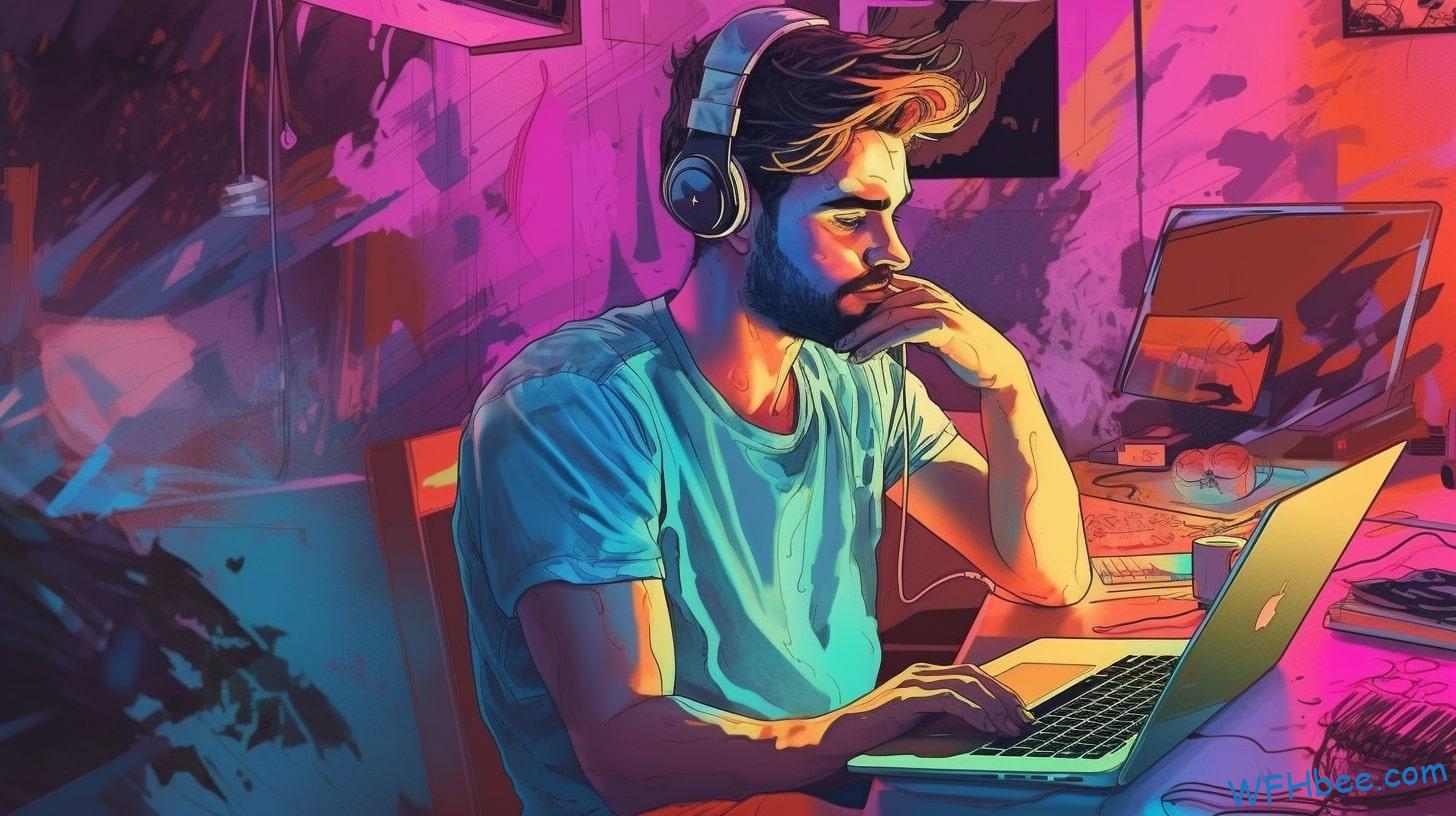
Remote Graphic Design Freelancing Tips and Strategies
One of the most effective ways to establish a successful freelance career in graphic design is by leveraging online platforms and building a strong digital presence. As someone who values freedom, you have the opportunity to work remotely as a graphic designer. With remote work becoming increasingly popular, it’s important to develop skills in remote graphic design project management and client communication.
When it comes to remote graphic design project management, organization is key. Utilize project management tools like Trello or Asana to keep track of your tasks, deadlines, and client feedback. Set clear goals and communicate them effectively with your clients to ensure everyone is on the same page.
Communication plays a crucial role in remote graphic design freelancing. Since you won’t be physically present with your clients, it’s vital to establish open lines of communication through email, video calls, or instant messaging platforms. Regularly update your clients on the progress of their projects and address any concerns or questions they may have promptly.
Building a strong digital presence is essential for attracting potential clients as a freelancer. Create an engaging portfolio website that showcases your best work and demonstrates your unique style. Use social media platforms like Instagram or LinkedIn to share your designs and connect with other professionals in the industry.
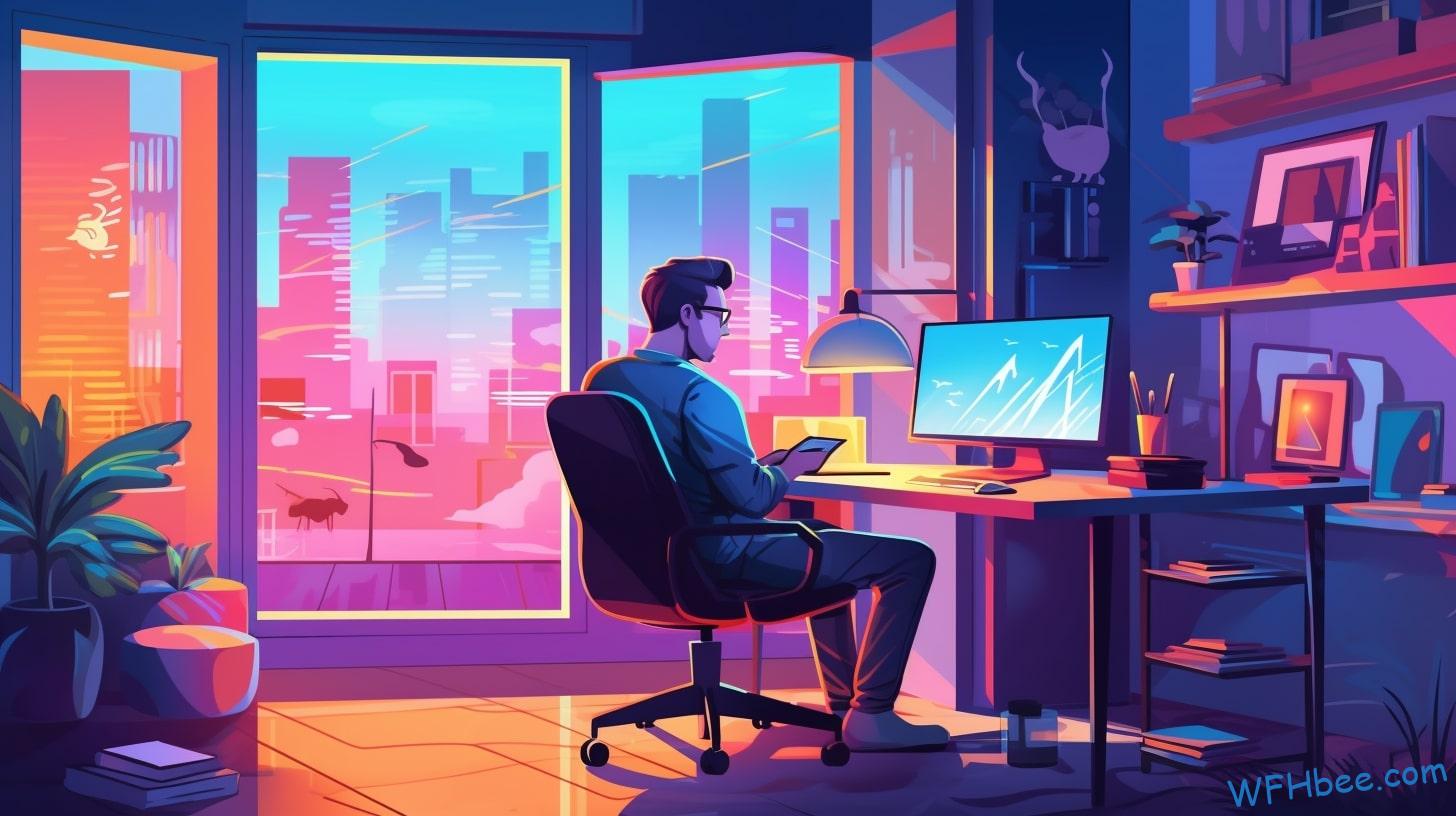
Time Management Techniques for Remote Graphic Designers
When managing remote projects, it’s crucial for graphic designers to effectively allocate their time and prioritize tasks. As a freelance graphic designer, you value your freedom and independence.
To make the most of your time and ensure efficient workflow, here are some time management techniques tailored for remote graphic designers like yourself:
- Implement Time Tracking Tools: Use time tracking software or apps to keep track of how much time you spend on each project. This will help you stay organized, evaluate your productivity, and accurately bill clients.
- Use Communication Tools: Utilize communication tools such as Slack or Trello to collaborate with clients and team members. These platforms foster effective communication by providing real-time updates, file sharing capabilities, and task assignment features.
- Prioritize Tasks Effectively: Create a to-do list at the beginning of each day or week. Prioritize tasks based on deadlines and importance. By breaking down larger projects into smaller tasks, you can approach them systematically and avoid feeling overwhelmed.
By implementing these techniques into your routine, you can optimize your productivity while maintaining a sense of freedom in your work. Remember that effective time management doesn’t mean sacrificing flexibility; rather, it allows you to have more control over your schedule and deliver high-quality results within deadlines.
As a remote graphic designer who values freedom in their work environment, incorporating these time tracking tools and communication platforms will enhance both your productivity and client satisfaction. Stay organized, communicate efficiently with the use of technology tools available today, prioritize tasks wisely – all while enjoying the flexibility that comes with working remotely!
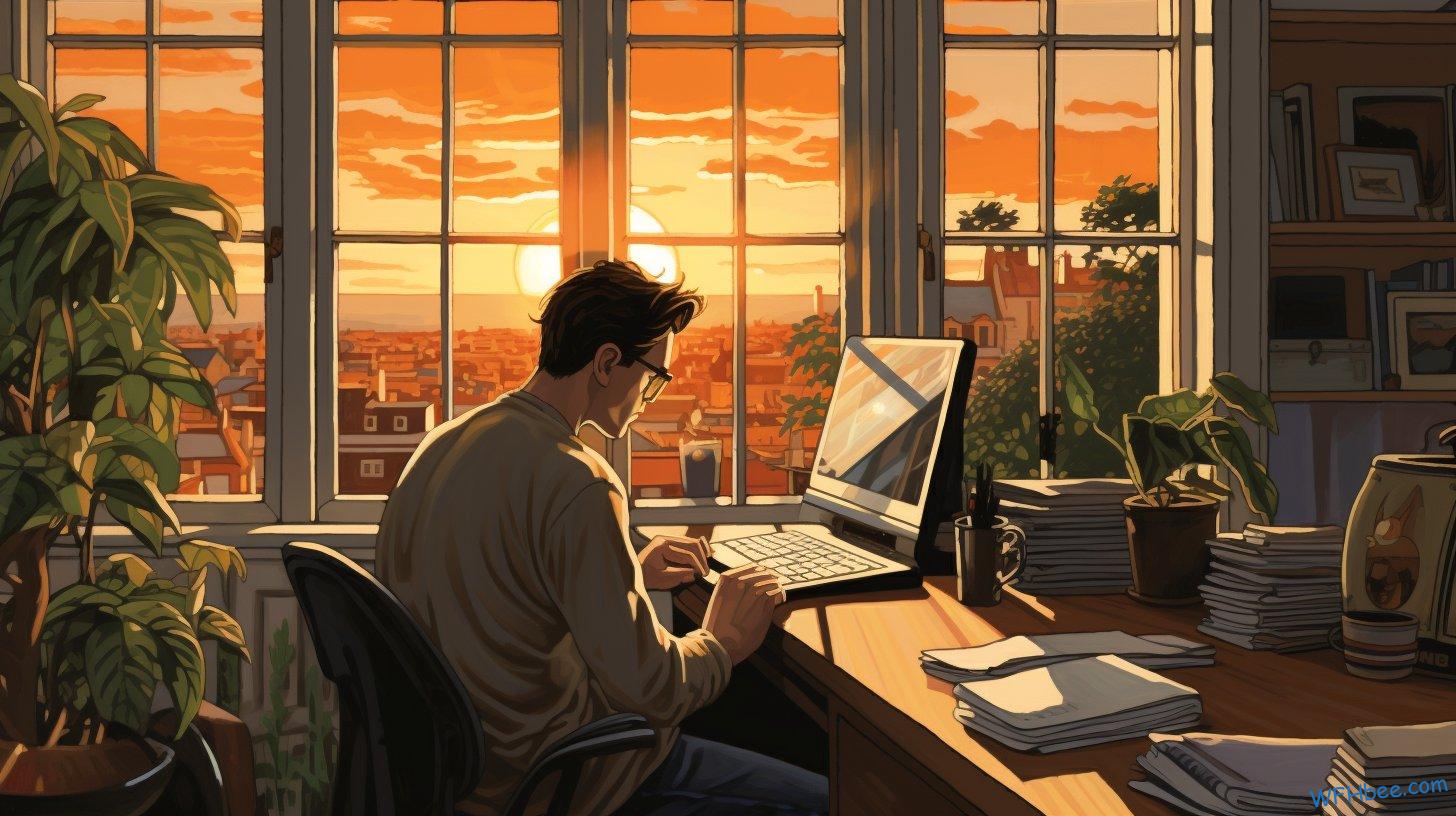
Remote Graphic Design Training and Skill Development
As a freelancer, you can enhance your skills and stay up-to-date with remote graphic design training opportunities. In today’s digital age, there are numerous options available to expand your knowledge and expertise in the field of graphic design without having to leave the comfort of your own home.
One way to improve your skills is by enrolling in remote graphic design courses. These online courses offer flexibility and convenience, allowing you to learn at your own pace and on your own schedule. Whether you are a beginner looking to learn the basics or an experienced designer wanting to refine your techniques, there are courses available for every skill level.
In addition to formal courses, online design communities can also be a valuable resource for skill development. These communities provide a platform for designers from all over the world to connect, collaborate, and share their work. By participating in these communities, you can receive feedback on your designs, learn new techniques from other professionals, and stay inspired by seeing what others in the industry are creating.
Being part of an online design community also gives you access to valuable networking opportunities. You can connect with potential clients or collaborators who may be interested in hiring your services or partnering with you on projects. Networking within these communities allows you to expand your professional network and open doors for future opportunities.
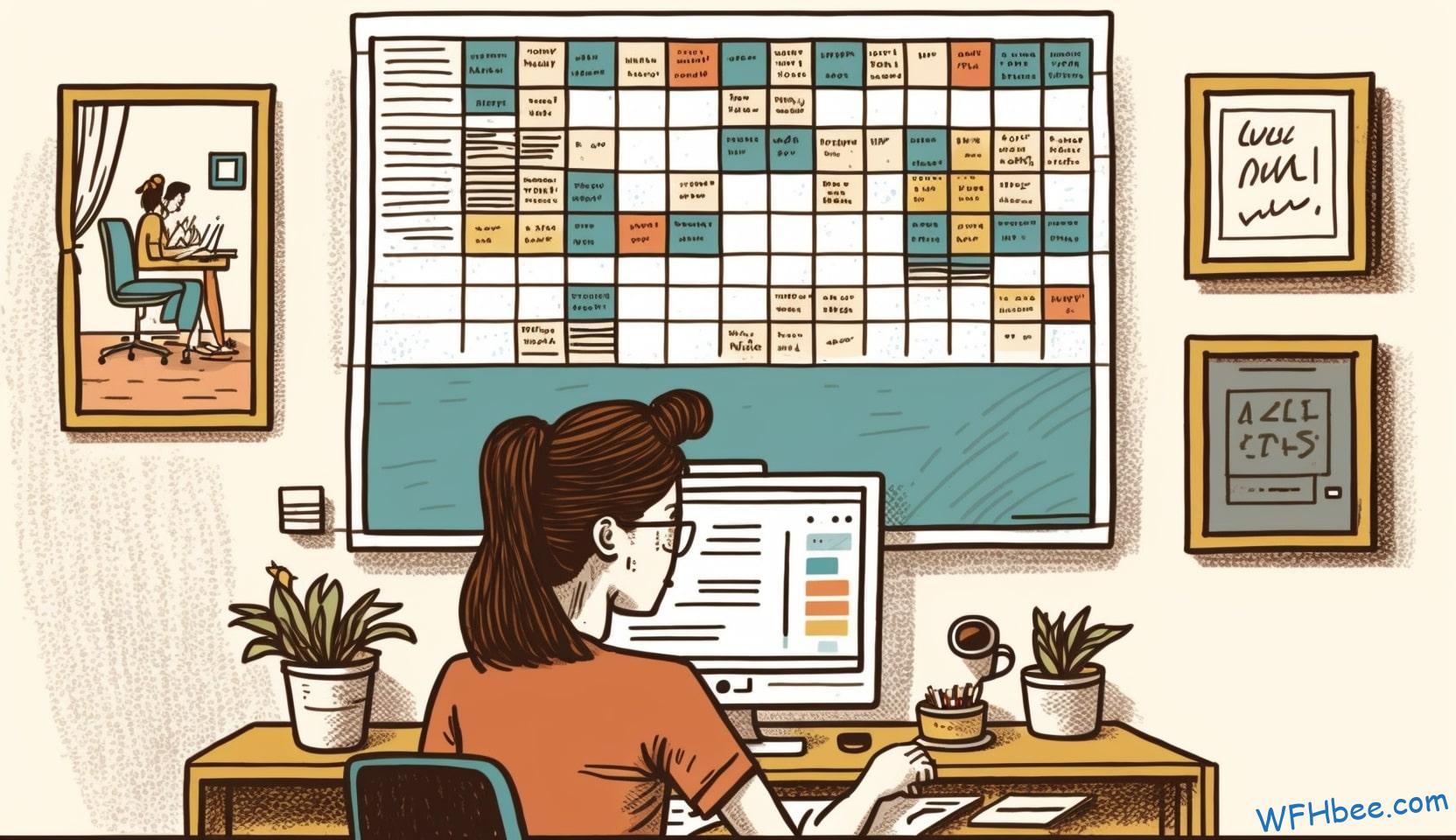
Remote Graphic Design Internships and Apprenticeships
Now that you’ve honed your graphic design skills through remote training and skill development, it’s time to take your expertise to the next level. Remote graphic design internships and apprenticeships offer you the opportunity to gain real-world experience while working from the comfort of your own space.
Here are three exciting aspects of remote graphic design internships and apprenticeships:
- Remote Graphic Design Mentorship: Being mentored by experienced professionals in the industry is invaluable for your growth as a graphic designer. With remote internships and apprenticeships, you can connect with mentors from all over the world who will guide you, share their knowledge, and provide constructive feedback on your work. This mentorship will help refine your skills, broaden your perspective, and elevate your creativity.
- Flexible Schedule: One of the greatest advantages of remote work is the freedom to choose when and where you work. As an intern or apprentice, you’ll have more control over managing your time. You can structure your days around personal commitments or other freelance projects while still gaining valuable experience in a professional setting.
- Remote Graphic Design Project Management: Working remotely allows you to explore project management in a virtual environment. As an intern or apprentice, you’ll collaborate with teams online using project management tools like Trello or Asana. This experience will teach you how to effectively communicate with clients, meet deadlines, and organize tasks – all essential skills for a successful career in graphic design.
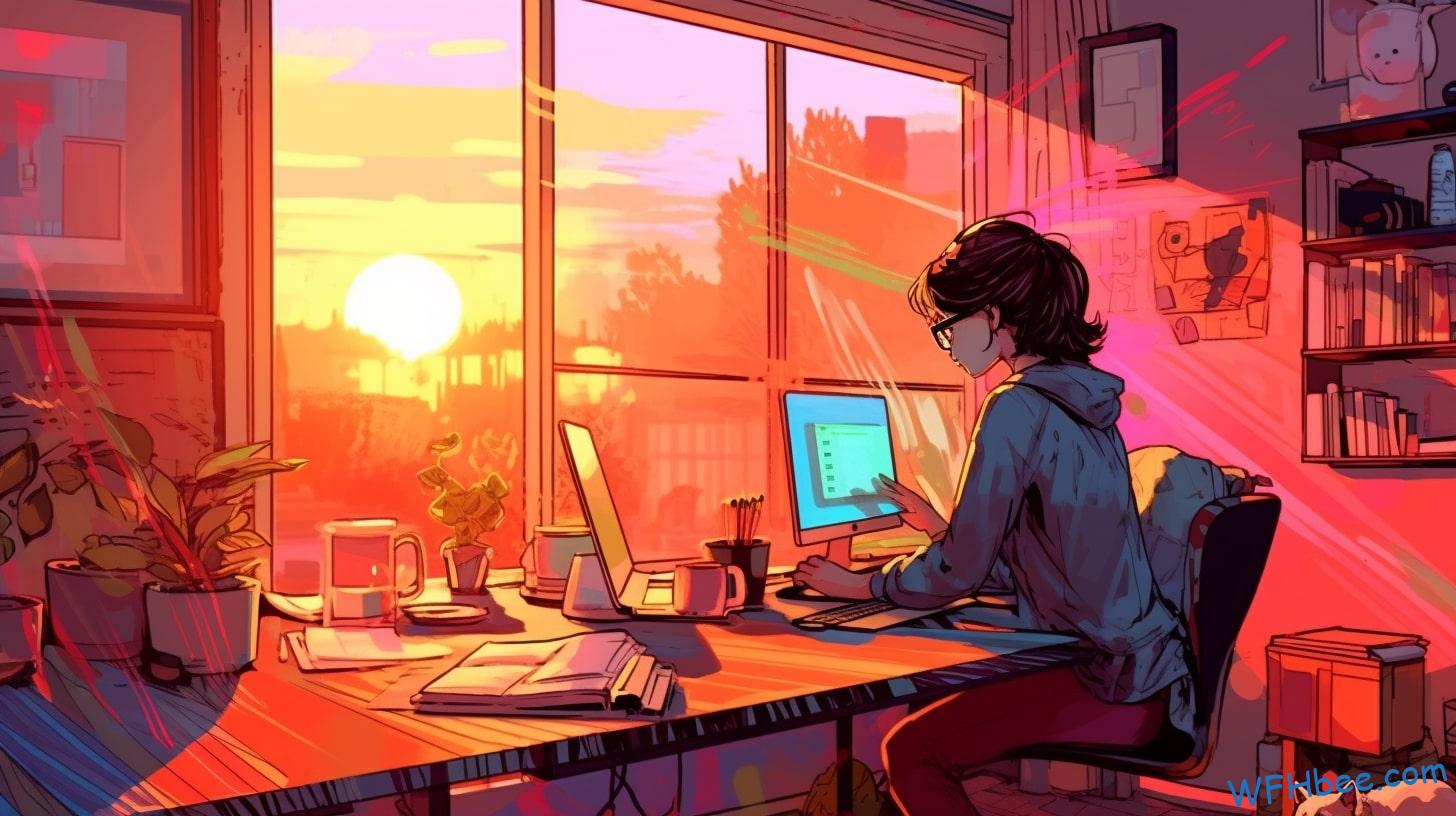
Remote Graphic Design Job Boards and Websites
By utilizing job boards and websites, you can easily find opportunities for remote positions in the field of graphic design. In today’s digital age, more and more companies are recognizing the benefits of hiring remote graphic designers. This has led to a thriving remote graphic design job market with numerous options available for those seeking freedom and flexibility in their work.
When embarking on your remote graphic design job search, it is important to explore various job boards and websites dedicated to connecting employers with talented designers like yourself. Platforms such as Upwork, Freelancer, and Dribbble offer a wide range of remote graphic design projects from clients around the world. These sites provide valuable resources that allow you to showcase your portfolio, connect with potential clients or employers, and negotiate project terms—all from the comfort of your own home.
To stay informed about the current trends in the remote graphic design job market, it is crucial to conduct regular market analysis. Keep an eye on industry-specific websites such as Behance or Creative Bloq for news and insights into emerging opportunities. Additionally, joining online communities like Reddit’s r/graphic_design or LinkedIn groups can provide valuable networking opportunities where you can learn from experienced professionals and gain insights into potential job openings before they are widely advertised.

Frequently Asked Questions
How Can Remote Graphic Designers Overcome the Lack of Face-To-Face Communication With Clients?
To overcome the lack of face-to-face communication with clients, focus on effective communication techniques. Utilize video calls, screen sharing, and project management tools to maintain clear and frequent communication. Building trust and rapport as a remote graphic designer is crucial for success.
What Are Some Tips for Managing Distractions While Working Remotely as a Graphic Designer?
To manage distractions while working remotely, try these tips: create a designated workspace free from interruptions, establish a schedule with dedicated work hours, use productivity apps to stay focused, and take regular breaks to recharge.
Are There Any Challenges Specific to Remote Graphic Designers That Are Not Faced by In-House Designers?
As a remote graphic designer, you face unique challenges that in-house designers may not. Balancing your freedom with discipline and managing communication effectively are key to overcoming these obstacles.
How Can Remote Graphic Designers Stay Updated With the Latest Design Trends and Industry Developments?
To stay updated with the latest design trends and industry developments, you can join online design communities and follow influential designers on social media. Stay motivated by setting goals and finding inspiration in your freedom to work remotely.
What Are Some Effective Strategies for Building a Strong Online Presence as a Remote Graphic Designer?
To build a strong online presence as a remote graphic designer, focus on online marketing and establishing a compelling social media presence. These strategies can help you connect with potential clients and showcase your work, giving you the freedom to thrive in your remote career.

Conclusion
In conclusion, remote work offers graphic designers a world of possibilities and opportunities. By leveraging essential tools, finding remote gigs, and setting up a productive workspace, you can thrive in the virtual realm.
Embracing collaboration techniques is also crucial for remote graphic designers. Just like a skilled artist seamlessly blends colors on their canvas, remote graphic designers can blend creativity with technology to create stunning designs from the comfort of their own homes.
So, embrace this digital era and let your talent shine through the pixels as you navigate the exciting world of remote graphic design.

